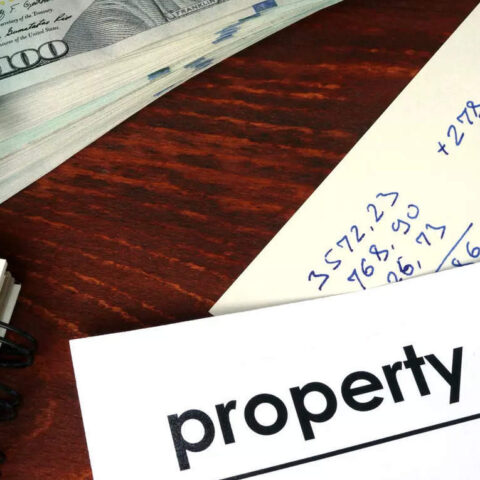Property taxes are among the largest operating expenses for commercial property owners.
In today’s high interest rate and inflationary environment, proactive strategies are required to minimize, and not merely manage, this cost.
With numerous Ontario municipalities collecting over $30 billion in property taxes annually and passing budgets with double-digit percentage increases in property taxes, property tax mitigation is imperative.
Unfortunately, navigating the property tax system is challenging, particularly given the unprecedented delay in updating assessments in Ontario.
The Municipal Property Assessment Corporation (MPAC) is responsible for conducting property assessments in Ontario.
Yet, their ability to fulfill their statutory mandate of regularly reassessing properties to ensure the fairness and accuracy of assessments has been stifled by the postponement of reassessment in 2021, 2022, 2023 and now, 2024.
Regular reassessments are essential for accurate property valuations and equitable property tax distribution. Absent a reassessment, now more than ever the task of ensuring the correctness, currency and equity of individual assessments resides with taxpayers.
The following discussion delves into the essential components of a successful property tax minimization strategy in Ontario.
Currency of assessments and property depreciation
Properties in Ontario are assessed based on the market as of Jan. 1, 2016, but these assessments must reflect the current physical state of a property.
While MPAC’s annual assessment updates typically capture changes to properties stemming from factors like fire or demolition, certain aspects of a property’s physical state and condition – for example, depreciation – get scant consideration.
Many commercial and industrial properties are assessed by MPAC using the cost approach, where depreciation, which is based on a building’s age, is subtracted from the cost to construct of an equivalent new building.
Under MPAC’s assessment model, a property constructed in or close to 2016 would receive minimal, if any, depreciation to reflect its current state.
Today, however, this property is not “new,” but rather, an eight-year-old building requiring many years of depreciation to reflect its current state in an assessment.
Failure to apply the necessary depreciation to reflect the age of the building would lead to significant property overvaluation and excessive property taxation.
By analogy, an eight-year-old model car with 200,000 kilometres logged has depreciated and is not as valuable as an equivalent brand-new car.
MPAC has largely failed to reduce assessed values to account for the additional years of depreciation throughout the reassessment delay.
Similarly, properties assessed using the direct comparison or income approaches to value might not have received the adjustments for the aging of the buildings warranted by the reassessment delay.
Taxpayers must initiate property assessment appeals to obtain the assessment reduction necessary to reflect the present state of their properties.
Equity of assessment
In assessment appeals, the Assessment Review Board (ARB), after determining the current value of the property (essentially its market value as of Jan. 1, 2016), must consider the value at which similar properties in the vicinity of the property are assessed.
If these assessments are lower, then the assessment of the property must be reduced so its assessed value is equitable with the value of similar properties.
Failure to appropriately apply depreciation means that in addition to these properties being assessed incorrectly based on their physical state, they may also be assessed inequitably.
Simply put, it is inequitable where MPAC’s methodology provides that a property built in 2016 be assessed with the same or similar depreciation as a property constructed up to eight years later.
Recent decisions by the ARB have rejected the reliance on assessment to sales ratios (ASR) for determinations of equity of assessment, favouring a comprehensive evaluation of “all points of comparison,” between the property under appeal and similar property, based on case-specific evidence.
These decisions follow the precedent set by the Divisional Court in Municipal Property Assessment Corp. v. Loblaw Properties Ltd. 2017 ONSC 1299, 2017 CarswellOnt 2861, where the court held that to determine whether an equity adjustment is necessary, “all points of comparison” must be considered.
In Bell Canada v Municipal Property Assessment Corporation, 2023 CanLII 3033 (ON ARB), while the parties relied on ASR studies to calculate the equity adjustment for the property under appeal, the ARB determined the appropriate equity adjustment based on the assessed value of a single similar property.
Significantly, the assessment value relied on for the equity adjustment was itself the result of a reduction due to an assessment appeal.
In General Motors of Canada Company v Ingersoll (Town), 2023 CanLII 85301 (ON ARB), the ARB went more granular and isolated individual components to determine whether specific components of the cost approach require an equity adjustment to align them with the assessments of other similar properties reduced because of assessment appeals.
These decisions highlight that equity is a litigation and advocacy-driven issue and a moving target that taxpayers must evaluate annually.
Properties yet to be appealed or whose appeals were resolved earlier in the current assessment cycle may be entitled to equity adjustments.
Taxpayers must conduct an annual review of their assessments and that of comparable properties to determine if an equity adjustment is warranted.
This proactive measure will ensure they are not inadvertently paying more than their fair share of property taxes and, by extension, subsidizing their competitors.
Correctness of assessments and palpable errors
Given the more than 5.5 million properties in Ontario and the inherent limitations of mass appraisal, errors in property assessments are inevitable.
Typically, to rectify these errors, taxpayers must exercise their annual right of appeal. However, for errors spanning several years, S. 40.1 of the Assessment Act provides another remedy.
Recent decisions by the ARB highlight the important role of section 40.1 applications in correcting assessments.
In 388210 Ontario Limited v Municipal Property Assessment Corporation Region 15, 2023 CanLII 64028 (“0 Centre Street”), the ARB reevaluated its approach to applications brought under S. 40.1 of the Act.
The ARB now defines a “palpable error” as a factual error of conspicuous magnitude — something plainly evident and easy to understand.
If such an error has the potential to impact a property’s assessed value or classification, the ARB may exercise its discretion to open assessment appeals.
This has made the relief from excessive assessment and associated property tax provided by section 40.1 more accessible to taxpayers.
A successful application under S. 40.1 enables taxpayers to claim property tax refunds for an indefinite number of years. Notably, in the recent 0 Centre Street decision, the ARB extended the appeal period for the 2005 to 2016 taxation years, effectively unlocking 11 years of appeals starting 18 years before the decision date.
Accordingly, it is imperative that taxpayers determine the year the error in their assessment originated before filing a palpable error application with the ARB.
Tax classification and municipal applications
The Assessment Act mandates annual tax classification determinations based on property use.
Changes in property use may necessitate a tax classification change or reapportionment, potentially resulting in significant property tax reductions.
Additionally, properties may qualify for tax exemptions, again emphasizing the need for annual assessment reviews.
Beyond the Assessment Act, taxpayers should be aware of their ability to obtain tax relief under the Municipal Act and the City of Toronto Act.
Various grounds, including vacancy, change in use, repairs and renovation, demolition, gross errors, charity, and heritage rebates, provide avenues for potential property tax refunds.
The deadline for most municipal applications related to the 2023 taxation year is Feb. 29, 2024.
Tax minimization in 2024
Given the recent ARB and court decisions and reassessment delay, commercial property owners must take a proactive approach to their property assessment and taxation.
With the burden of maintaining accurate assessments shifting to taxpayers’ annual assessment reviews, leveraging S. 40.1 applications for palpable errors, exploring tax classification changes and equity adjustments, and understanding the implications of the physical state of properties are essential components of any successful property tax minimization strategy.
In 2024, a proactive approach and creative strategies will ensure property taxation is minimized and not simply managed.
EDITOR’S NOTE: The image associated with this CRE Matters column, which appeared in the RENX Daily Newsletter on Friday, Dec. 8, was incorrect. It displayed the wrong author. RENX apologizes for the error. The image which appears on the RENX website with this column, does display the correct authors, Damian Bernacik and Robert Brazzell.









